Get ready on an unforgettable journey with our comprehensive guide to budget backpacking. Discover affordable travel tips, unlock secrets to securing cheap accommodations, and master money-saving hacks that redefine thrifty adventures. This ultimate resource is your ticket to exploring the world without breaking the bank. Get ready to maximize your travel experience and stretch your budget to the fullest!
Context
- Research and Set a Realistic Budget
- Choose Budget-Friendly Destinations
- Travel During Off-Peak Seasons
- Embrace Hostel Culture
- Utilize Public Transportation
- Explore Local Markets and Street Food
- Take Advantage of Free Activities
- Pack Smart and Light
- Stay Flexible
- Utilize Travel Apps and Loyalty Programs
1. Research and Set a Realistic Budget
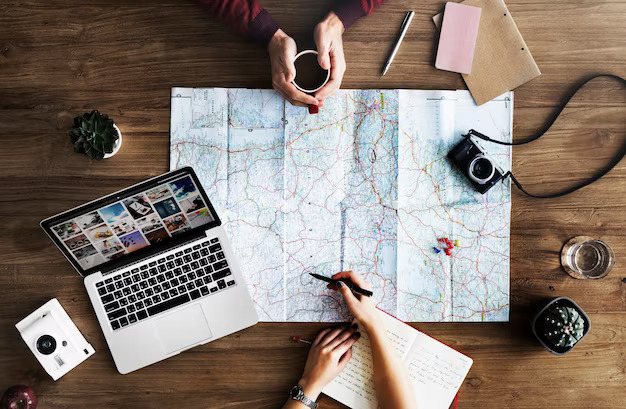
Planning your dream getaway on a budget requires meticulous research and savvy financial planning. In this comprehensive guide, we’ll delve into the essential steps for researching and setting a realistic travel budget, ensuring that your adventure is not only memorable but also financially stress-free.
- Determine Your Total Budget:
- Begin by establishing an overall budget for your trip. Consider all possible expenses, including transportation, accommodation, meals, activities, travel insurance, visas, and miscellaneous costs.
- Be realistic about what you can afford and consider potential sources of funding, such as savings, income, or support from family and friends.
- Research Destinations:
- Identify potential destinations based on your interests, preferences, and budget constraints. Different countries and regions have varying costs of living, so choose a destination that aligns with your budget goals.
- Use travel forums, blogs, and budget travel websites to gather information about the cost of accommodation, food, transportation, and activities in different places.
- Seasonal Considerations:
- Research the peak and off-peak seasons for your chosen destination. Traveling during the off-peak season can significantly reduce costs for accommodations and flights.
- Be mindful of weather conditions during your chosen travel period and plan accordingly.
- Accommodation Costs:
- Explore various accommodation options, from hostels and guesthouses to budget hotels and rental apartments. Look for reviews and ratings to ensure the chosen accommodation meets your standards.
- Consider staying in a mix of accommodations to balance comfort and cost-effectiveness.
- Transportation Expenses:
- Research transportation options, including flights, buses, trains, and local transportation within the destination.
- Use flight comparison websites, and be flexible with your travel dates to find the most affordable options. Consider budget airlines and alternative transportation methods for cost savings.
- Daily Expenses:
- Estimate daily expenses for meals, snacks, and incidentals. Research the cost of dining out versus cooking your own meals and factor in the local currency exchange rates.
- Explore local markets and street food options to experience local cuisine at a lower cost.
- Activities and Attractions:
- Create a list of activities and attractions you want to experience at your destination.
- Research the costs associated with each activity and prioritize based on your interests and budget constraints.
- Travel Insurance and Visa Fees:
- Include the cost of travel insurance in your budget. While it may seem like an additional expense, it provides essential coverage for unexpected situations.
- Research visa requirements and fees for your destination and include these in your budget.
- Contingency Fund:
- Allocate a portion of your budget as a contingency fund for unexpected expenses or emergencies.
- This fund can be crucial for unforeseen circumstances, such as medical emergencies or changes in travel plans.
- Utilize Budgeting Tools:
- Use budgeting tools and apps to track your expenses and ensure you stay within your allocated budget.
- Many apps allow you to set spending limits for different categories, providing real-time insights into your financial situation.
- Review and Adjust:
- Regularly review your budget as you gather more information and make adjustments as needed.
- Be flexible and willing to adapt your plans based on new insights or unexpected changes.
2. Choose Budget-Friendly Destinations
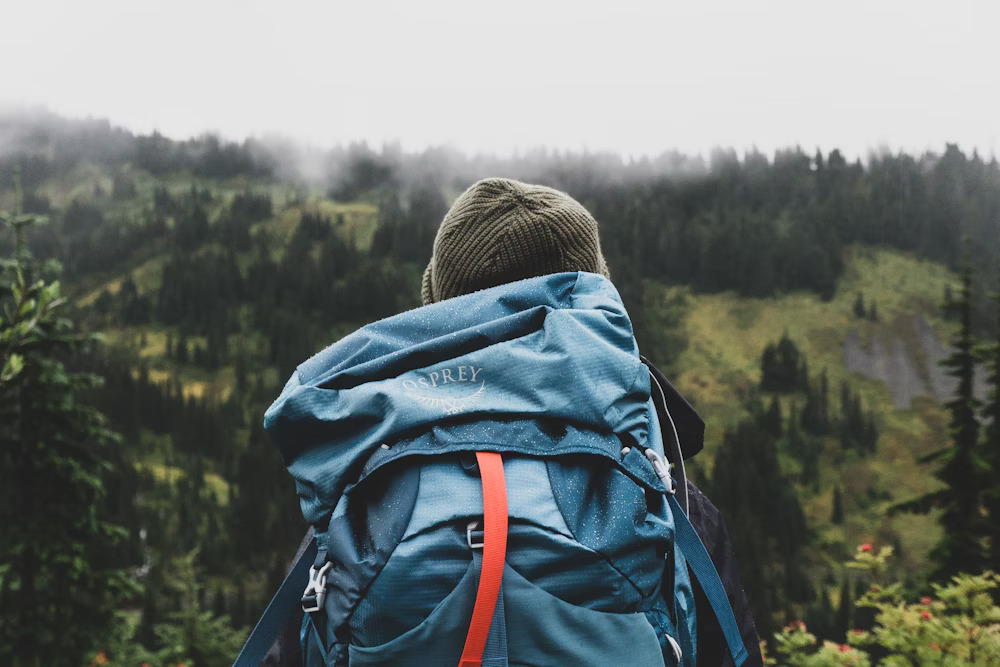
1. Research Cost of Living:
- Begin by researching the cost of living in potential destinations. Identify places that align with your budget.
2. Explore Currency Exchange Rates:
- Evaluate currency exchange rates to understand the purchasing power of your budget.
3. Consider Southeast Asia:
- Explore the budget-friendly options in Southeast Asia, including countries like Thailand, Vietnam, and Cambodia.
4. Explore Eastern Europe:
- Consider Eastern European destinations such as Poland, Hungary, and Romania for a mix of history and affordability.
5. Central America on a Budget:
- Delve into Central American gems like Guatemala, Nicaragua, and Honduras for stunning landscapes and a lower cost of living.
6. Opt for South America:
- Discover South American countries like Bolivia, Peru, and Ecuador for diverse cultures and budget-friendly experiences.
7. Consider India:
- Explore the richness of India’s culture and cost-effective travel options.
8. Check out Mexico:
- Consider Mexico for a vibrant mix of history, beaches, and cuisine at budget-friendly prices.
9. Southeastern Europe:
- Explore Southeastern European countries, such as Bulgaria, Serbia, and Montenegro, for unique experiences at lower costs.
10. Explore Budget Travel Blogs:
- Tap into budget travel blogs and forums to gain insights from fellow travelers.
11. Evaluate Safety and Amenities:
- Consider safety and available amenities while assessing budget-friendly destinations.
12. Assess Visa Requirements:
- Check visa requirements for potential destinations, opting for countries with straightforward visa processes or visa-free options.
3. Travel During Off-Peak Seasons

Traveling during off-peak seasons offers a myriad of advantages, from quieter attractions to significant cost savings. This strategic approach not only allows you to avoid crowds but also presents unique opportunities to immerse yourself in the local culture. In this guide, we’ll explore the art of planning your travels during off-peak seasons, providing insights into how you can optimize your budget and experience destinations in a more authentic light.
1. Research Off-Peak Periods:
Begin by researching the off-peak seasons for your chosen destination. These periods typically vary based on factors such as weather, school holidays, and local events. Utilize online resources, travel forums, and official tourism websites to identify the quieter times of the year. For instance, in Europe, the shoulder seasons of spring and fall often present ideal off-peak opportunities with milder weather and fewer tourists. By understanding the specific off-peak times, you can plan your trip to coincide with these periods for optimal benefits.
2. Enjoy Cost Savings:
One of the most significant advantages of traveling during off-peak seasons is the potential for substantial cost savings. Accommodation prices, airfares, and even activity costs often drop during these periods. Hotels and airlines frequently offer discounts to attract visitors during slower times, translating into significant savings for budget-conscious travelers. Take advantage of these lowered costs to upgrade your accommodation, extend your stay, or allocate funds to unique local experiences that might have been cost-prohibitive during peak seasons.
3. Embrace Authentic Experiences:
Traveling during off-peak seasons allows you to engage with the local culture on a deeper level. Without the hustle and bustle of crowds, you can connect with locals more easily, savor authentic cuisine, and partake in cultural events. Attractions and landmarks are more accessible, providing an intimate experience without the need to navigate through masses of tourists. This creates a unique opportunity to witness the destination in its truest form, fostering a more profound connection with the local lifestyle and traditions. By embracing off-peak travel, you not only save money but also gain a richer, more authentic travel experience.
4. Embrace Hostel Culture

Embracing hostel culture is not just about finding affordable accommodation; it’s a mindset that opens doors to unique experiences, vibrant interactions, and lasting memories. Hostels offer more than just a place to rest; they are hubs of cultural exchange and camaraderie. In this guide, we’ll delve into the art of embracing hostel culture, providing insights on how to make the most of your budget-friendly accommodations.
1. Choose the Right Hostel: Selecting the right hostel sets the tone for your hostel experience. Research various hostels in your destination, considering factors such as location, reviews, and the atmosphere they offer. Websites like Hostelworld and Hostelbookers provide detailed information and user reviews to help you make an informed decision. Look for hostels that align with your preferences, whether you seek a social atmosphere, quiet surroundings, or unique amenities.
2. Pack Wisely for Hostel Living: Hostel living often means shared spaces, so packing wisely is crucial. Consider bringing earplugs, an eye mask, and a padlock for securing your belongings. A lightweight towel, flip-flops for shared bathrooms, and a power strip for charging devices can enhance your hostel experience. Additionally, a travel-friendly sleep sheet can be a valuable asset, providing comfort and cleanliness in shared sleeping quarters.
3. Embrace Social Spaces: Hostels are designed to foster social interactions. Take advantage of common areas, communal kitchens, and organized activities to meet fellow travelers. Engaging in hostel-sponsored events, such as city tours, cooking classes, or game nights, not only enhances your travel experience but also allows you to form connections with like-minded individuals. Embrace the opportunity to share stories, travel tips, and cultural insights with people from around the world.
4. Respect Hostel Etiquette: Respecting hostel etiquette is essential for a harmonious coexistence with fellow travelers. Keep noise levels down during quiet hours, tidy up after yourself in communal areas, and be considerate of others’ space and privacy. Following these unwritten rules contributes to a positive hostel environment and ensures everyone can enjoy their stay.
5. Opt for Dorm-Style Accommodations: While private rooms are available in many hostels, opting for dorm-style accommodations is an excellent way to fully immerse yourself in hostel culture. Dorms encourage interaction with fellow travelers, creating a sense of camaraderie that is unique to hostel living. Be open to making new friends, sharing travel experiences, and learning from the diverse perspectives of your roommates.
6. Use Hostel Networks: Many hostels are part of larger hostel networks or associations. Utilize these networks to discover affiliated hostels in different locations, often with shared values and a similar community-oriented atmosphere. Being part of a hostel network can also provide you with exclusive discounts and perks during your travels.
7. Embrace Hostel Work Exchanges: Some hostels offer work exchange programs, allowing you to contribute your skills in exchange for free or discounted accommodation. This not only helps you save money but also provides an opportunity to become more deeply involved in hostel life and the local community.
5. Utilize Public Transportation
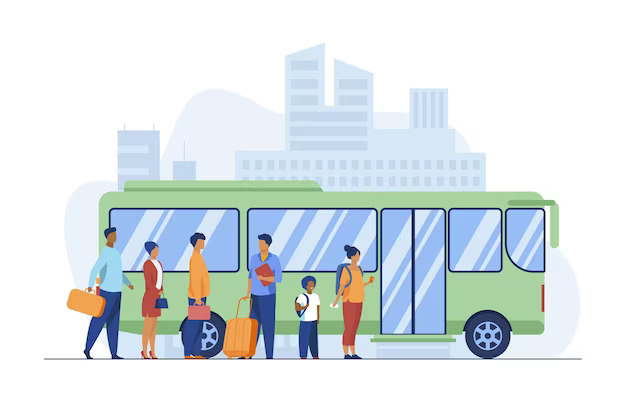
Public transportation is not just a budget-friendly option; it’s a gateway to immersive local experiences, efficient city exploration, and sustainable travel. In this guide, we’ll unravel the intricacies of effectively utilizing public transportation, providing you with tips and insights on how to seamlessly navigate cityscapes while keeping your travel costs in check.
1. Research Public Transportation Options: Before arriving at your destination, research the available public transportation options. Explore bus routes, metro systems, trams, and any other modes of public transit. Utilize online maps, official transportation websites, and travel forums to gather information on routes, schedules, and ticketing systems.
2. Purchase Local Transportation Passes: Many cities offer cost-effective transportation passes that provide unlimited or discounted access to public transit. These passes are typically available for a day, a week, or even longer durations. Purchase these passes upon arrival to maximize savings and simplify your travel logistics.
3. Familiarize Yourself with Ticketing Systems: Understand the ticketing systems used in your destination. Some cities operate on a zone-based system, while others may have flat-rate tickets. Familiarize yourself with how to purchase tickets, validate them, and any associated rules to avoid fines. Mobile apps or contactless payment options are becoming increasingly common, providing convenient alternatives to traditional paper tickets.
4. Master Public Transit Maps: Study public transit maps to comprehend the layout of the city’s transportation network. Identify key hubs, transfer points, and major landmarks. Having a clear understanding of the transit system’s geography will empower you to navigate seamlessly and make informed decisions about routes and connections.
5. Optimize Travel during Off-Peak Hours: Traveling during off-peak hours not only ensures a more comfortable experience but also often comes with reduced fares. Avoiding rush hours helps you navigate public transportation with ease while enjoying a more relaxed atmosphere.
6. Utilize Multi-Day Passes: For an extended stay in a city, consider utilizing multi-day transportation passes. These passes often provide a significant cost advantage compared to individual tickets for each journey. Calculate your daily travel needs and assess whether a multi-day pass aligns with your itinerary.
7. Embrace Walking and Cycling: In addition to traditional modes of public transportation, consider walking or cycling for shorter distances. Many cities offer bike-sharing programs or have pedestrian-friendly areas. Not only does this provide a budget-friendly alternative, but it also allows you to explore the city at a leisurely pace.
8. Seek Local Advice: Tap into local knowledge by seeking advice from residents, hostel staff, or fellow travelers. Locals often have valuable insights into the most efficient and budget-friendly ways to navigate their city’s public transportation system.
9. Stay Informed about Special Discounts: Cities frequently offer special discounts for certain demographics, such as students, seniors, or tourists. Research whether you qualify for any discounted fares or passes, ensuring you make the most of available cost-saving opportunities.
10. Be Mindful of Safety: While utilizing public transportation, prioritize your safety. Be aware of your surroundings, secure your belongings, and use well-lit and populated stops, especially during evening travel. Familiarize yourself with emergency procedures and contact information for local authorities.
6. Explore Local Markets and Street Food

One of the most delightful ways to experience a destination’s culture is by immersing yourself in its local markets and savoring street food. Beyond being budget-friendly, these culinary adventures offer a taste of authenticity and a glimpse into the daily life of the locals. In this concise guide, we’ll explore the essentials of navigating local markets and indulging in street food while keeping your travel budget in check.
1. Research Local Markets: Before venturing out, research local markets at your destination. Online platforms, travel guides, and recommendations from locals can guide you to vibrant markets where you can explore a diverse array of products. Familiarize yourself with market hours, days of operation, and any special events that might enhance your experience.
2. Embrace the Street Food Scene: Street food is a treasure trove of local flavors. Wander through bustling streets and alleys to discover vendors selling regional specialties. Be open to trying new dishes and interacting with street food vendors, who often provide valuable insights into local culinary traditions. Consider joining food tours led by locals for a curated and immersive experience.
3. Practice Hygiene Awareness: While indulging in street food, prioritize hygiene to ensure a safe culinary adventure. Opt for stalls and vendors with clean and well-maintained setups. Observe the preparation process, and choose vendors with a steady flow of customers, indicating freshness and popularity.
4. Engage with Locals: Interacting with locals at markets and street food stalls not only adds a personal touch to your experience but can also lead you to hidden gems. Ask for recommendations, strike up conversations, and embrace the opportunity to connect with the people who make the food. This not only enhances your culinary journey but can also result in memorable cultural exchanges.
5. Master the Art of Haggling: In many local markets, haggling is not just a skill; it’s a tradition. Practice the art of negotiation while shopping for local products. Politely inquire about prices, express interest, and be prepared to negotiate for a fair deal. Remember that a friendly approach often yields better results.
6. Explore Local Produce and Crafts: Local markets are not just about food; they often showcase the region’s produce, crafts, and traditions. Take time to explore stalls selling fresh fruits, handmade crafts, and unique souvenirs. By doing so, you not only support local artisans but also gain a deeper understanding of the destination’s cultural tapestry.
7. Be Adventurous with Street Food: Challenge your taste buds by trying street food specialties unique to the region. Whether it’s savory snacks, exotic fruits, or delectable desserts, embrace the adventure of trying new flavors. Pay attention to popular stalls with locals, as they often indicate high-quality and authentic dishes.
8. Stay Mindful of Dietary Preferences: While exploring local markets and street food, stay mindful of any dietary preferences or restrictions. Communicate clearly with vendors about your preferences, and be aware of common ingredients to avoid any unpleasant surprises.
7. Take Advantage of Free Activities

While travel often comes with expenses, there are numerous opportunities to enrich your journey without spending a dime. Taking advantage of free activities not only helps stretch your budget but also provides a deeper connection to the local culture. In this comprehensive guide, we’ll explore strategies for incorporating cost-free experiences into your travel itinerary.
1. Research Free Attractions: Begin your planning by researching free attractions at your destination. Museums, parks, historical sites, and cultural events often offer free entry on specific days or during certain hours. Utilize travel forums, websites, and local guides to compile a list of cost-free activities that align with your interests.
2. Explore Natural Wonders: Nature’s wonders often come with no price tag. Seek out parks, beaches, hiking trails, and scenic viewpoints that showcase the destination’s natural beauty. Embrace outdoor activities like hiking, bird-watching, or picnicking to connect with the environment without spending money.
3. Attend Local Events and Festivals: Many destinations host free events and festivals that provide a vibrant glimpse into local culture. Check community calendars for parades, markets, music festivals, and cultural celebrations. Attending these events not only immerses you in the local scene but also offers opportunities to interact with residents.
4. Take Walking Tours: Explore the destination on foot through self-guided or organized walking tours. Many cities offer free walking tours led by locals or enthusiasts who share insights into the area’s history, architecture, and hidden gems. Walking tours provide a unique perspective while allowing you to set your own pace.
5. Visit Public Libraries and Cultural Centers: Public libraries and cultural centers often host free lectures, workshops, and exhibitions. Take advantage of these resources to learn more about the destination’s history, art, and literature. Libraries can also be quiet havens for reading or planning your next adventure.
6. Enjoy Free Outdoor Activities: Engage in recreational activities without spending money. Public spaces often feature facilities for activities like jogging, cycling, or even yoga. Seek out beaches, lakes, or rivers where swimming or sunbathing comes at no cost. Utilize local sports facilities or parks for a budget-friendly workout.
7. Attend Open-Air Performances: Many cities organize open-air performances, such as concerts, theater productions, or dance shows, in public spaces. Check event calendars and local announcements for these performances, providing entertainment without the need for a ticket.
8. Capture Moments Through Photography: Exploring a destination with a camera in hand can transform any stroll into a photo-worthy adventure. Capture the essence of the place through photography, creating lasting memories without spending a penny. Documenting your journey also allows you to share your experiences with others.
9. Engage in Volunteer Opportunities: Consider giving back to the community by participating in volunteer activities. Local initiatives or environmental projects often welcome travelers willing to contribute their time and skills. Not only does this provide a sense of fulfillment, but it also fosters connections with the local community.
10. Connect with Locals: One of the most enriching aspects of travel is connecting with locals. Strike up conversations, attend community events, or join informal gatherings. Locals can provide valuable insights into hidden gems and off-the-beaten-path experiences that may not be found in traditional guidebooks.
8. Pack Smart and Light
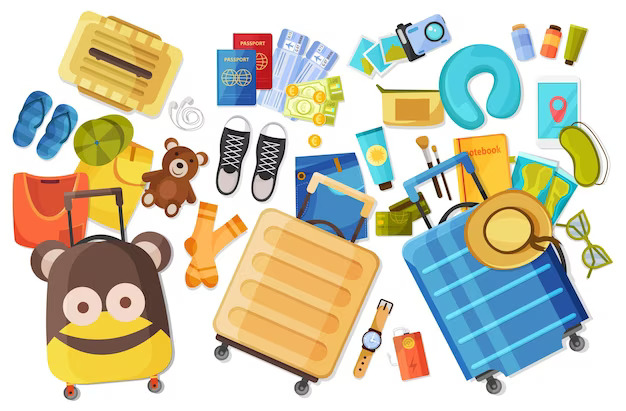
Mastering the art of smart and light packing is the key to hassle-free travel. Whether you’re a backpacker or a city explorer, optimizing your luggage can enhance your journey by reducing stress and increasing mobility. In this concise guide, we’ll unravel the secrets of packing smart and light for a seamless travel experience.
Creating a Packing List and Choosing the Right Luggage: Begin your packing journey by creating a meticulous list of essentials. Prioritize versatile clothing, toiletries, and travel documents, focusing on items that serve multiple purposes. Choose lightweight and compact luggage, such as a well-organized backpack or carry-on suitcase, adhering to airline size requirements to avoid unnecessary fees.
Embracing the Capsule Wardrobe Concept and Rolling Clothes: Streamline your wardrobe with the capsule wardrobe concept. Select clothing items that complement each other, allowing for easy mixing and matching. Consider the weather at your destination and pack accordingly, ensuring practicality and comfort. To maximize space and minimize wrinkles, opt for the efficient technique of rolling clothes instead of folding.
Choosing Dual-Purpose Items and Limiting Toiletries: Optimize your packing space by choosing dual-purpose items. Items like a versatile scarf or a multi-use tool can serve multiple functions, reducing the need for additional items. Minimize toiletries by using travel-sized containers or reusable bottles, and be mindful of purchasing essentials upon arrival. Adhere to airline regulations for liquids in your carry-on.
Packing Essentials in Your Carry-On and Wearing Bulky Items During Travel: Prioritize your essentials by packing them in your carry-on. This includes medications, travel documents, a change of clothes, and valuable electronics. Wearing bulkier items, such as a jacket or sturdy shoes, during travel not only saves space in your luggage but also ensures your comfort during the journey.
Utilizing Packing Cubes and Being Mindful of Souvenirs: Invest in packing cubes to maintain organization within your luggage. These compact organizers help separate various items, making it easier to locate belongings without disrupting your entire suitcase. If you plan on bringing back souvenirs, leave some space in your luggage or pack a collapsible bag. Be mindful of weight restrictions and consider shipping larger items to your home address if necessary.
9. Stay Flexible

Travel is an ever-changing adventure, and embracing flexibility is the key to unlocking its full potential. Staying open to spontaneity allows you to discover unexpected gems, connect with locals, and navigate unforeseen challenges with grace. In this guide, we’ll delve into the art of staying flexible during your travels, ensuring a journey filled with surprises and meaningful experiences.
Adopt a Loose Itinerary: Begin your journey by adopting a loose itinerary. While it’s essential to have a general plan, leaving room for spontaneity can transform your travel experience. Highlight key attractions or activities you’d like to explore, but allow yourself the freedom to veer off the beaten path. This approach not only opens the door to unexpected adventures but also enables you to connect more deeply with the unique rhythm of each destination.
Embrace Last-Minute Changes: Flexibility shines when faced with last-minute changes. Whether it’s adjusting your route, altering accommodation plans, or changing your daily schedule, a flexible mindset allows you to adapt gracefully to evolving circumstances. Rather than viewing changes as disruptions, consider them as opportunities to discover new places, meet interesting people, or stumble upon hidden gems.
Prioritize Experiences Over Itinerary: Shift your focus from a strict itinerary to prioritizing experiences. If a local recommends a hidden gem or invites you to join a spontaneous event, be open to adjusting your plans. The richness of travel often lies in these unplanned moments that become cherished memories. By prioritizing experiences, you allow yourself the freedom to immerse fully in the unique culture and atmosphere of each destination.
Stay in Flexible Accommodations: Your choice of accommodations can significantly impact your flexibility. Opt for lodgings with flexible booking and cancellation policies. This ensures that you can extend your stay in a captivating location or pivot to a new destination if you discover an unexpected gem. Hostels, guesthouses, or boutique hotels often offer more lenient policies compared to larger chain hotels.
Engage with Locals and Be Spontaneous: One of the best ways to infuse spontaneity into your journey is by engaging with locals. Listen to their recommendations, accept invitations, and immerse yourself in the authentic experiences they suggest. Being spontaneous with your activities, whether joining a local celebration or embarking on an unplanned adventure, adds a layer of excitement to your travel narrative.
10. Utilize Travel Apps and Loyalty Programs

In the digital age, technology has become an indispensable companion for travelers. Utilizing travel apps and loyalty programs not only enhances convenience but also offers a myriad of benefits, from cost savings to personalized experiences. In this guide, we’ll explore how to harness the power of travel apps and loyalty programs for a seamless and rewarding travel experience.
Utilizing Travel Apps:
- Booking Accommodations:
- Apps: Airbnb, Booking.com, and Hotels.com.
- Purpose: These apps help you find and book accommodations tailored to your preferences and budget. They often provide user reviews, photos, and exclusive deals.
- Navigating Cities:
- Apps: Google Maps, Citymapper, and Maps.me.
- Purpose: These navigation apps offer real-time directions, public transportation information, and offline maps, ensuring you can explore cities efficiently.
- Language Translation:
- Apps: Google Translate and Duolingo.
- Purpose: Overcome language barriers by translating text, speech, or even images. Duolingo also helps you learn basic phrases in the local language.
- Trip Planning:
- Apps: TripIt and Sygic Travel.
- Purpose: These apps assist in organizing your travel itinerary, storing reservations, and providing offline access to maps and plans.
- Budget Management:
- Apps: Trail Wallet and Splitwise.
- Purpose: Track your expenses on the go, manage budgets, and split costs with travel companions easily.
- Local Exploration:
- Apps: TripAdvisor and Yelp.
- Purpose: Discover local attractions, restaurants, and activities based on user reviews and ratings.
Leveraging Loyalty Programs:
- Airline Loyalty Programs:
- Programs: Delta SkyMiles, United MileagePlus, and Emirates Skywards.
- Benefits: Earn points for flights, enjoy upgrades, access airport lounges, and receive exclusive offers.
- Hotel Loyalty Programs:
- Programs: Marriott Bonvoy, Hilton Honors, and Accor Live Limitless.
- Benefits: Accumulate points for hotel stays, enjoy room upgrades, and access perks like late check-out or complimentary Wi-Fi.
- Car Rental Loyalty Programs:
- Programs: Hertz Gold Plus Rewards and Avis Preferred.
- Benefits: Earn points for car rentals, receive priority service, and enjoy discounts and free upgrades.
- Credit Card Rewards Programs:
- Programs: Chase Ultimate Rewards, American Express Membership Rewards, and Citi ThankYou Rewards.
- Benefits: Accumulate points for various expenses, redeem for travel-related purchases, and access exclusive travel perks.
Top Budget Travel Apps and Websites for Seamless Journeys
1. Travel and Transport Bookings:
- Skyscanner (App and Website):
- Usage and Benefits: Skyscanner is a versatile platform that allows budget travelers to compare and book flights, hotels, and car rentals. Its “Everywhere” feature is particularly useful for spontaneous backpackers looking for the cheapest destinations.
- Rome2Rio (App and Website):
- Usage and Benefits: Rome2Rio provides comprehensive transportation route information, including air travel, trains, buses, ferries, and driving. It helps backpackers plan their journey by showing various transportation options between two points.
- FlixBus (App and Website):
- Usage and Benefits: FlixBus is a popular bus service in Europe, offering affordable and comfortable long-distance travel. The app allows users to book bus tickets, view schedules, and track their journey in real-time.
- Rail Europe (App and Website):
- Usage and Benefits: For backpackers exploring Europe, Rail Europe simplifies train travel. The platform provides train schedules, tickets, and passes for various European countries, allowing budget-conscious travelers to navigate the continent efficiently.
2. Stay: Hostel, Homestays, Campings:
- Hostelworld (App and Website):
- Usage and Benefits: Hostelworld is a go-to platform for budget backpackers. It offers an extensive list of hostels worldwide, allowing users to read reviews, compare prices, and book affordable accommodation easily.
- Airbnb (App and Website):
- Usage and Benefits: Airbnb connects travelers with unique accommodation options, including homestays, apartments, and even campsites. It provides a budget-friendly alternative to traditional hotels, offering a more local and personalized experience.
- Camping and Caravanning Club (App and Website):
- Usage and Benefits: Ideal for backpackers seeking outdoor adventures, this club’s app and website provide information on campsites and caravan parks worldwide. It’s a valuable resource for those looking to camp on a budget.
3. Navigation Apps and Websites for Most Countries:
- Google Maps (App):
- Usage and Benefits: Google Maps is a versatile navigation app that works in most countries. It offers real-time navigation, public transit information, and offline maps, making it an essential tool for navigating unfamiliar territories.
- Maps.me (App):
- Usage and Benefits: Maps.me provides detailed offline maps for countries and regions. Travelers can download maps in advance and use them without an internet connection, making it an excellent tool for navigating without using data.
4. Translator Working in Most Countries:
- Google Translate (App):
- Usage and Benefits: Google Translate supports a wide range of languages and functions offline, making it an invaluable tool for communication in various countries. It translates text, speech, and even images, aiding travelers in overcoming language barriers.
5. SIM and Internet Providers and Their Plans:
- TravelSim (Website):
- Usage and Benefits: TravelSim provides international SIM cards with affordable data and calling rates. It’s convenient for backpackers who want a single SIM card for multiple countries, avoiding high roaming charges.
- Local Providers (Varies by Country):
- Usage and Benefits: Purchasing a local SIM card in each country is often cost-effective. Popular providers like Vodafone, Orange, or T-Mobile offer prepaid plans with data, ensuring affordable and reliable internet connectivity during your travels.
Remember that the availability and effectiveness of these apps and services may vary depending on your specific destination and the current state of the travel industry. Always check for the latest information and reviews before relying on any service.
Wanderer’s Word
Crafting an unforgettable budget backpacking journey revolves around strategic choices. Begin by meticulously planning and setting a realistic budget. Opt for budget-friendly destinations, exploring them during off-peak seasons for both savings and a more authentic experience. Embrace the vibrant hostel culture, utilize public transportation, and delve into local markets and street food for budget-friendly authenticity. Seize free activities for added experiences without added costs. Master the art of smart and light packing for flexibility. These savvy strategies transform budget backpacking into an enriching adventure, blending cultural immersion with financial mindfulness for an unforgettable exploration.
"Wander wisely, solo and budget-friendly"
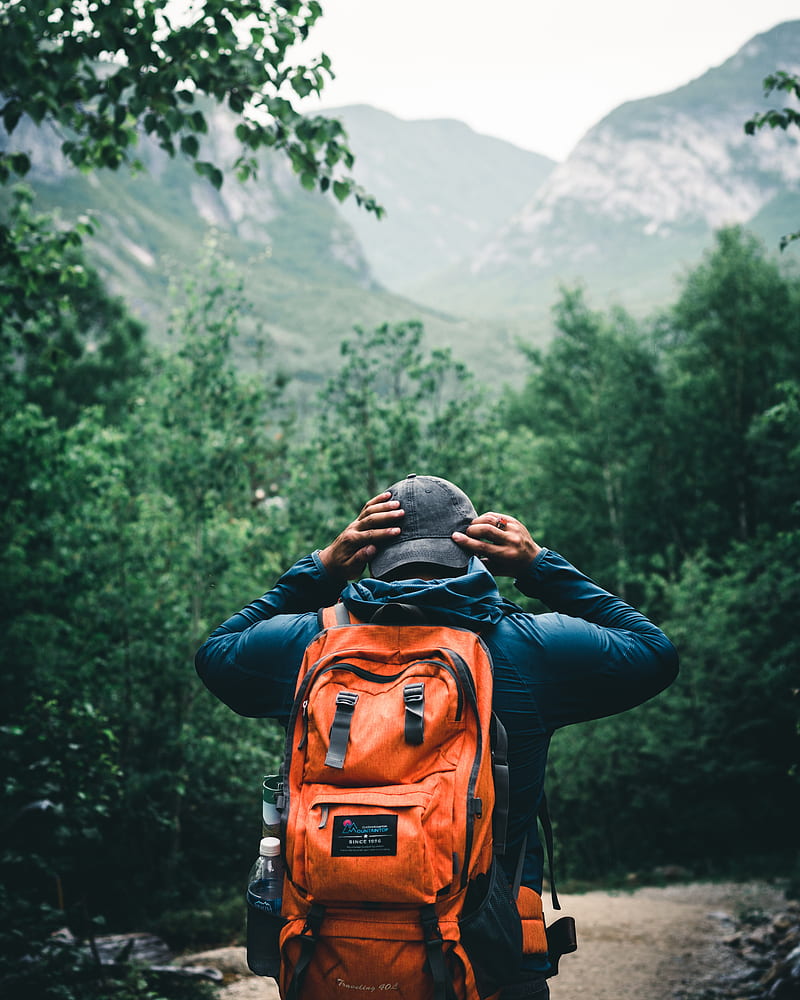

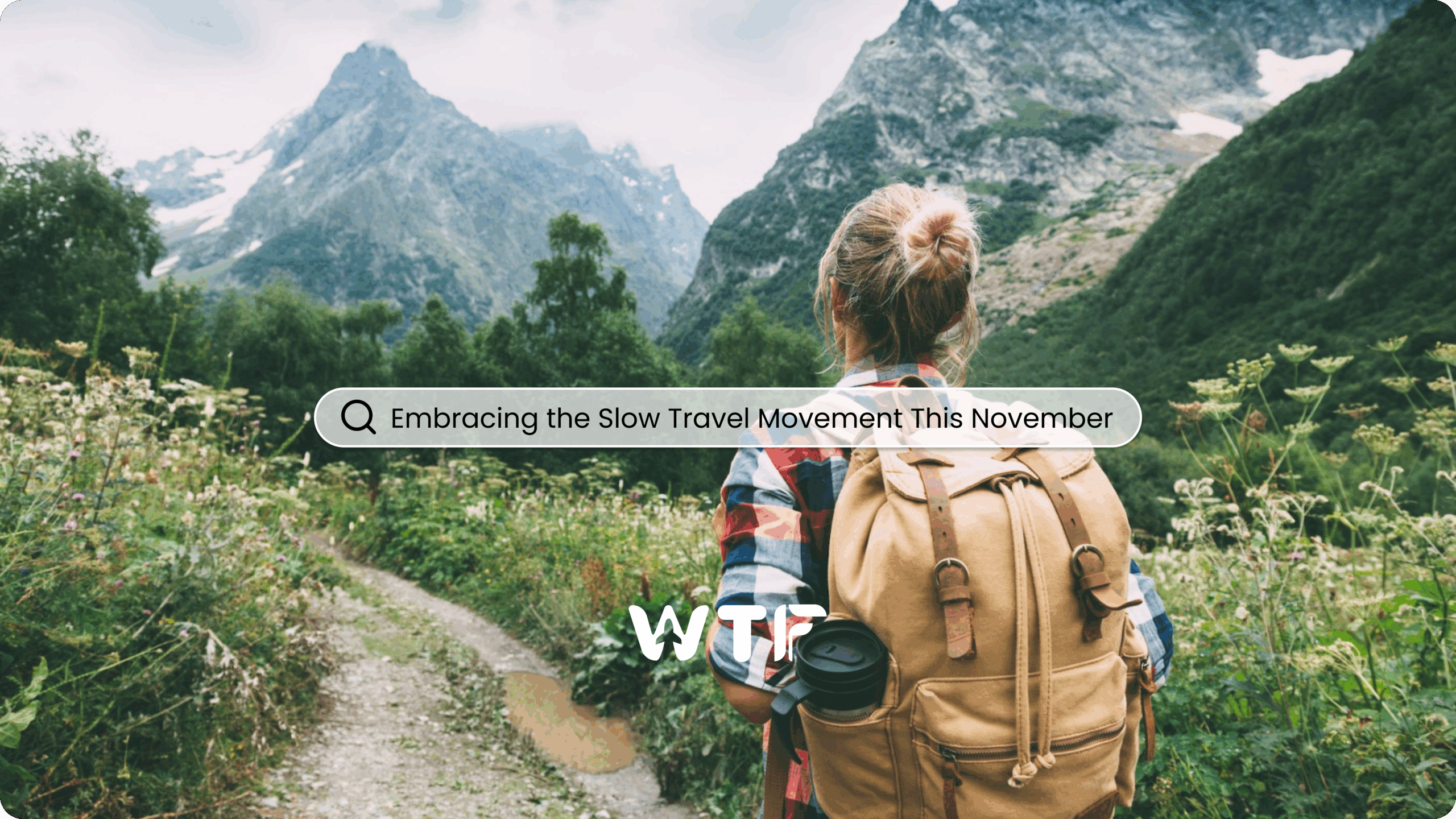


My brother suggested I may like this web site. He was once totally right.
This put up truly made my day. You can not believe simply how much time I had spent for this info!
Thanks!